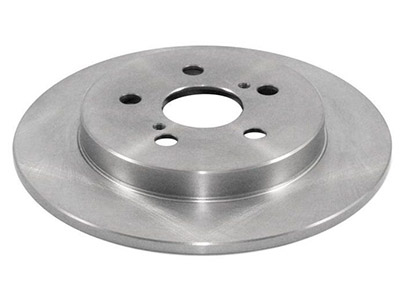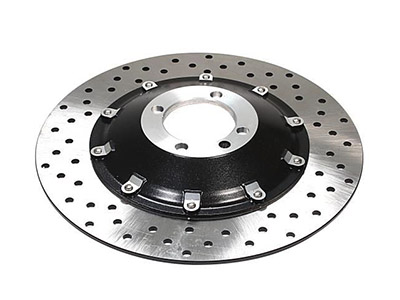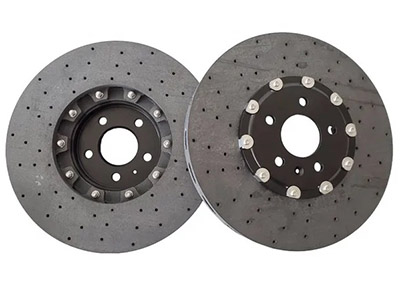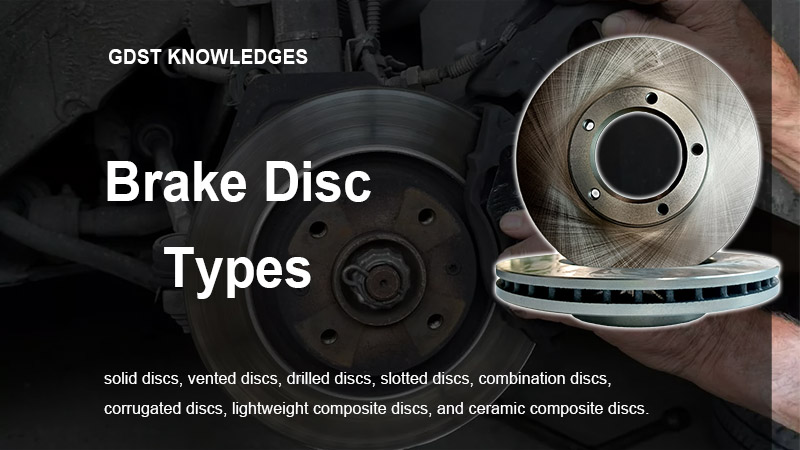When choosing brake discs, it is important to understand their types and features. Different types of brake disc are suitable for different vehicles and driving needs.
The main types of brake disc are solid discs, vented discs, drilled discs, slotted discs, combination discs, corrugated discs, lightweight composite discs, and ceramic composite discs.
This article will detail the various brake discs to help you understand all types of brake disc.
Solid Brake Disc

The surface of the brake disk is complete without any holes or scratches. Simple structure, low cost, stable braking power, and less wear on brake pads.
The heat dissipation is poor, and at high temperatures, the friction between the disc and the brake pad decreases, causing the braking power to weaken or even fail.
It is more suitable for daily driving, but not suitable for high-speed or extreme driving.
Vented Brake Disc

A cooling channel (ventilation slot) is provided between the two friction surfaces to enhance the heat dissipation effect.
widely used in mid-to-high-end models and performance cars to meet higher braking performance and heat dissipation requirements.
Drilled Brake Disc

You can see there are many holes in vented brake discs which increase air circulation to improve heat dissipation and make braking power more stable and water easier to drain after wading.
However, it may also shorten the service life and accelerate the wear of brake pads.
Widely used in mid-range and high-end models and performance cars to meet higher braking performance and heat dissipation requirements.
Slotted Brake Disc

Please look at the above picture, there are some slots on the surface of brake discs which are called slotted brake discs.
The design not only improves the heat dissipation performance of the disc, but also reduces wear and prolongs the service life of the disc and pads.
And effectively prevents the formation of a water film on slippery surfaces to ensure braking effectiveness.
However, because of the complexity of the production process, the price is relatively high.
It is widely used in vehicles with high requirements for braking performance, including high-performance sports cars, racing cars, luxury sedans, and off-road vehicles.
Combination Brake Disc (drilled and slotted)

There are both drilled and slotted designs on the brake disc, called combination brake discs.
The drilled design can prevent the brake disc from overheating, thus prolonging the service life of the braking system;
The slotted design not only enhances the braking effect, but also effectively discharges the water, dust, and other impurities that are generated when braking, keeping the braking system clean and stable.
They are usually used for vehicles that require high braking performance and resistance to water fades, such as high-performance sports cars, racing cars, luxury sedans, and off-road vehicles.
Corrugated Brake Disc

Unlike other brake discs, the corrugated brake disc is wavy and is a uniquely designed brake system component.
This type of brake disc has good heat dissipation, low noise and vibration, and high braking efficiency. However, it is expensive and requires high maintenance.
It is especially suitable for models with high requirements for braking performance, such as high-performance sports cars, large SUVs and off-road vehicles, electric vehicles, and hybrid vehicles.
Lightweight Composite Disc

A material such as aluminum or steel plate is used instead of the conventional gray cast iron material for the cap (small end), and the friction ring and cap are connected by bolts or other means.
This design helps to reduce weight and optimize space layout.
The lightweight composite disc has the advantages of effective resistance to heat degradation and high heat-resistant effect, but the production and assembly process is relatively complex and costly.
They are mainly used in high-end models or special-purpose vehicles for lighter body weight and better braking performance.
Ceramic Composite Brake Disc

Ceramic materials have excellent resistance to high temperature, abrasion, and corrosion, making ceramic composite brake discs able to maintain stable braking performance even under extreme working conditions.
However, due to cost and technical limitations, ceramic composite brake discs are not widely used in the market.
They are usually used in high-end customized models or racing cars.
If you want to know more and find a brake disc manufacturer, please feel free to contact us!



